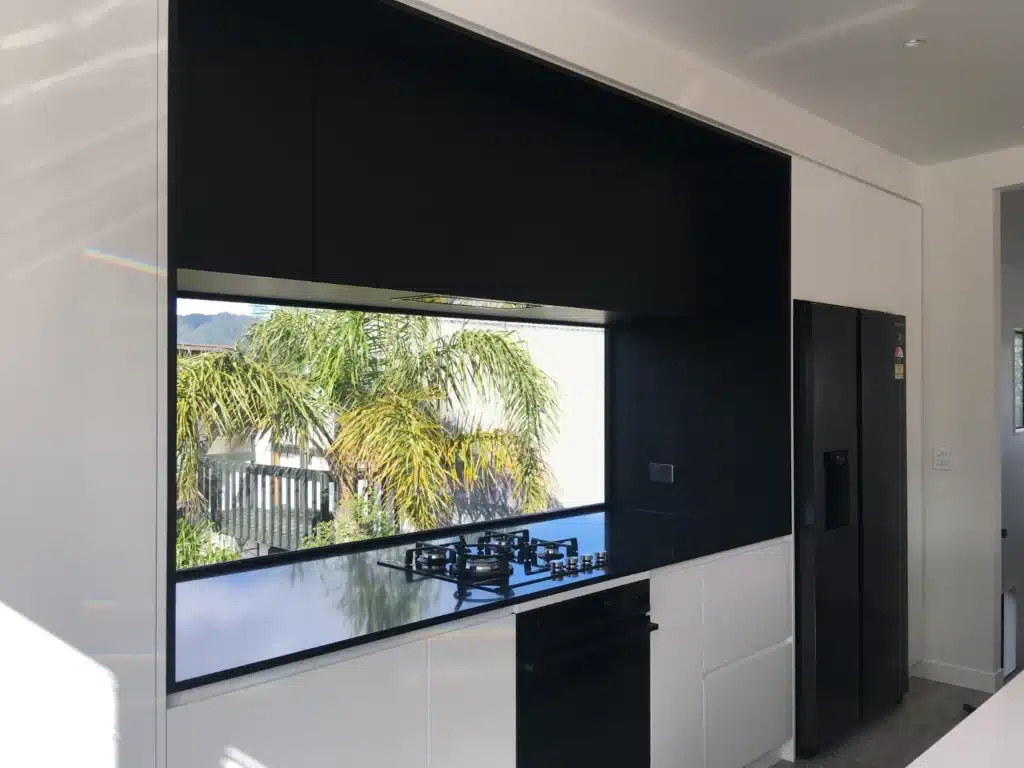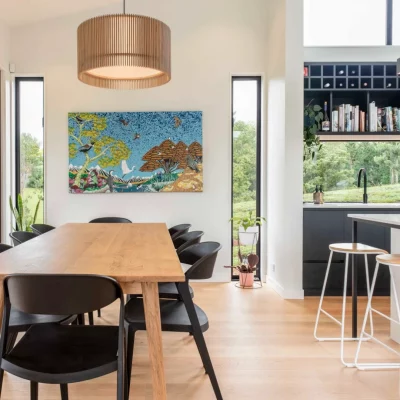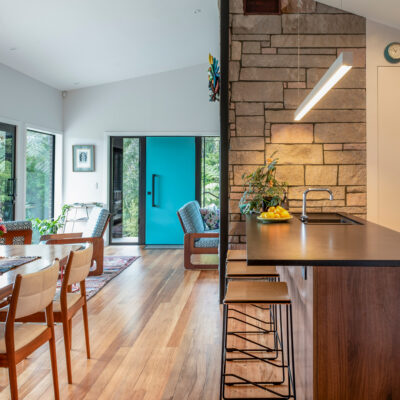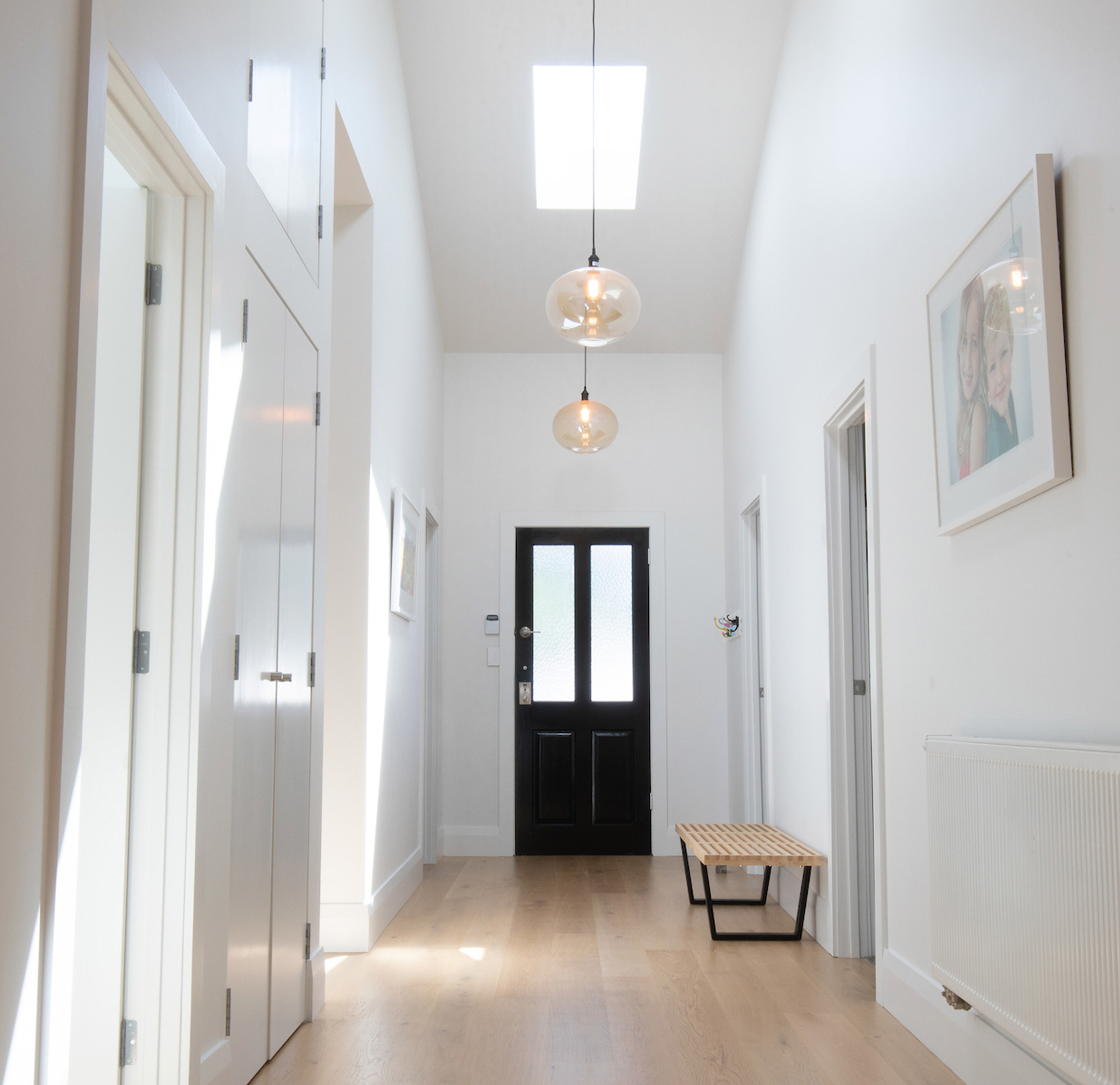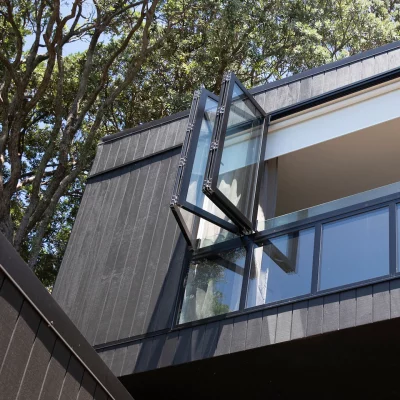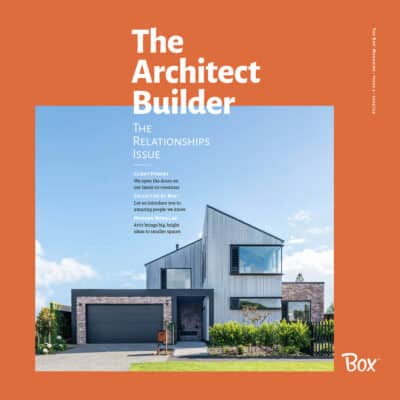Of the myriad decisions required when building your forever home, the kitchen benchtop is probably one of the more critical. Not only is it a significant visual feature in the open-plan living area but it must be functional for the way you and your family live. As a fulcrum of where aesthetics and amenity meet, it has to be both beautiful…and bulletproof.
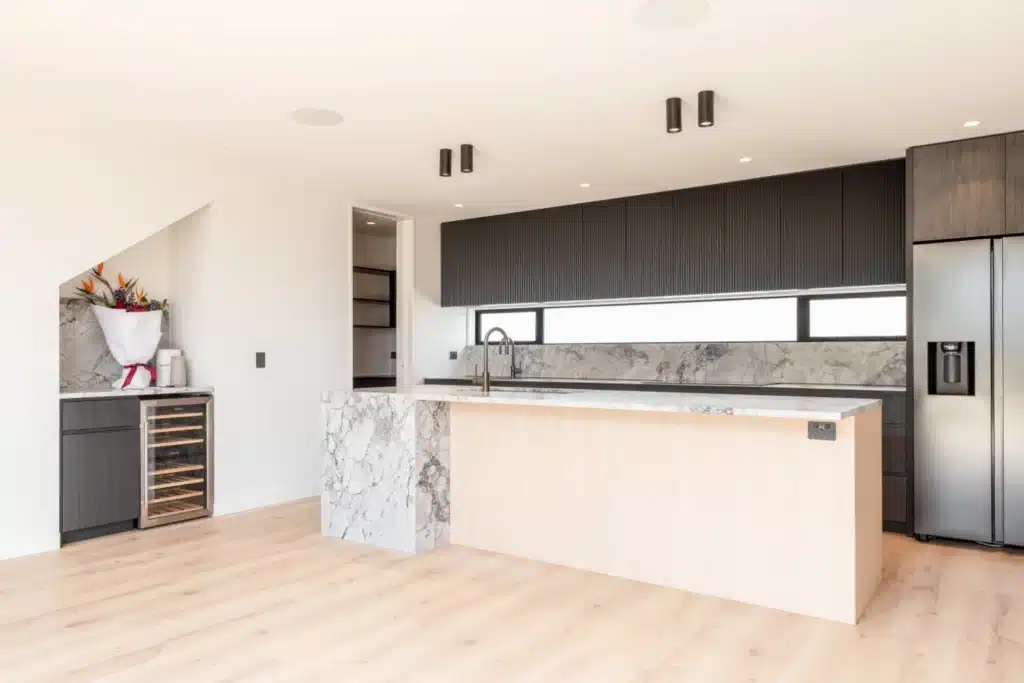
Complexity costs more
Design lead Tim Hogarth has guided many Box™ homeowners through the process and reiterates that the more complex a benchtop, the more expensive it will be. In this, he’s not only referring to its shape but also its material make-up and the labour content involved in crafting it. “For example, if it’s curved, the labour costs more; if you use high-end denser engineered stone that’s more expensive too,” he says.
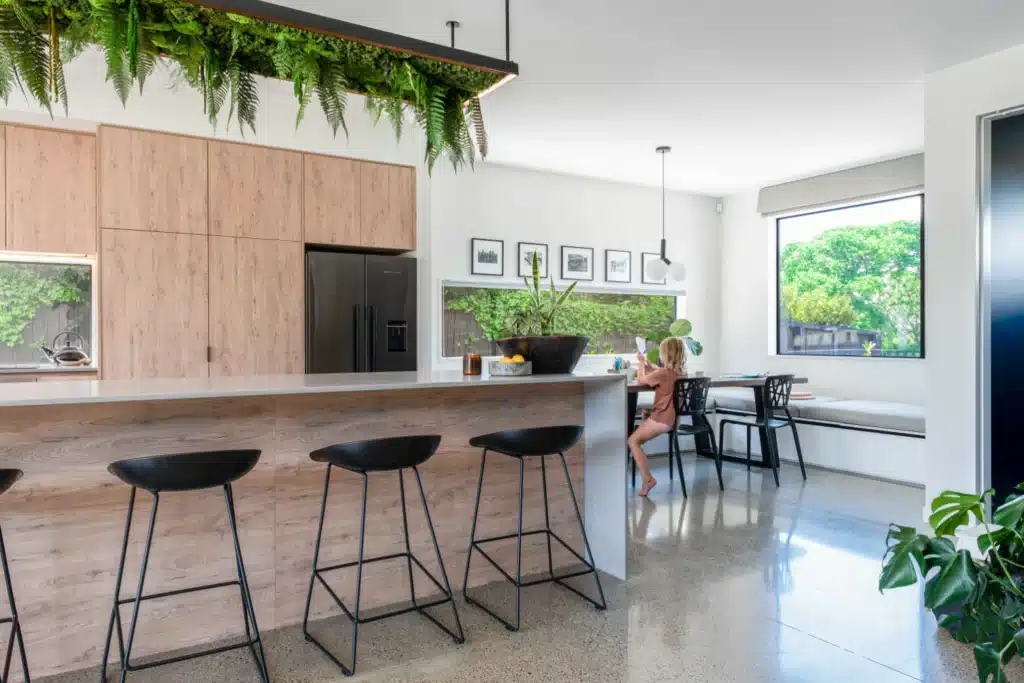
At the cheapest end of the scale is a product that Box™ seldom specifies for a kitchen setting. These are high pressure laminates (HPL) such as the well-known brand Formica. Because they are essentially a printed surface fused to a substrate, they come with different edge profiles. For more contemporary detailing, square-edge tapes and mitred edges can be used, and for a more curved detail – rolled edges. “It’s a waterproof product that can be good in laundries,” says Tim.
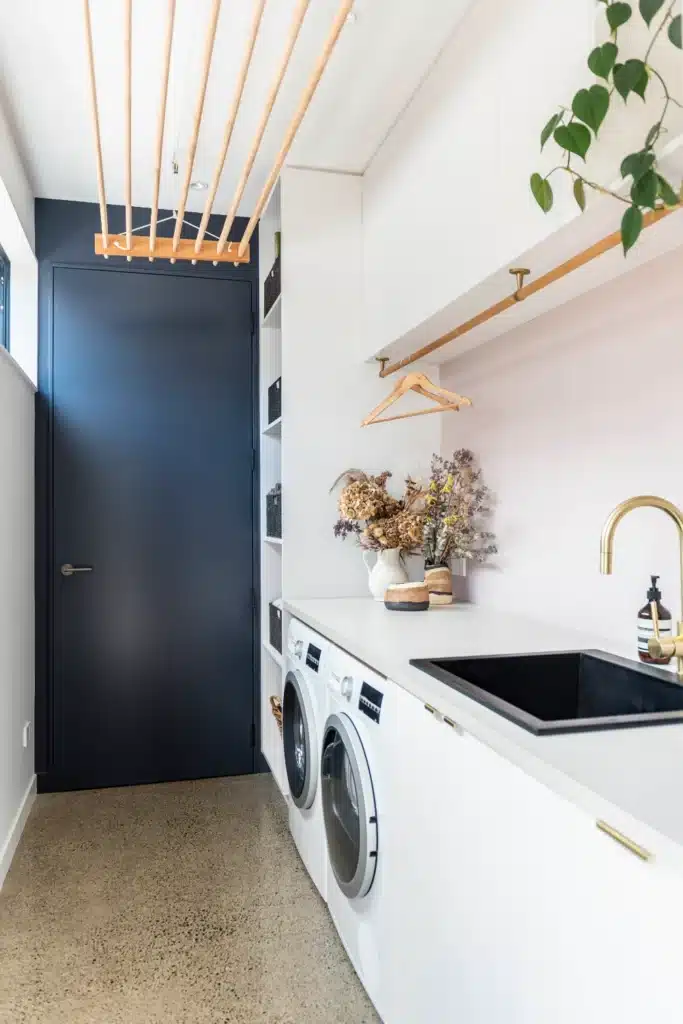
Stainless-steel is another entry-point product – a durable surface commonly seen in commercial kitchens. “One benefit of this is that you can weld the sink in and buffer out the joins,” explains Tim. “Plus they can be manufactured with edges of any thickness.”
What’s the deal with engineered stone?
Pressing natural quartz and resins together to form engineered stone for use in benchtops began in Italy in the 1960s and, 60 years later, the range is impressive to say the least. But not all engineered stone is created equal. A simple, white engineered stone comes in at an entry level price-point and the gradient moves through mid-range products to ones with a dense make-up and structure of a patterned grain throughout (rather than just printed on the surface), which is up there in cost with a natural stone. “Technological innovations have meant that engineered stone can be fabricated with a finer profile than natural stone,” explains Tim, “because it’s so dense and strong.”
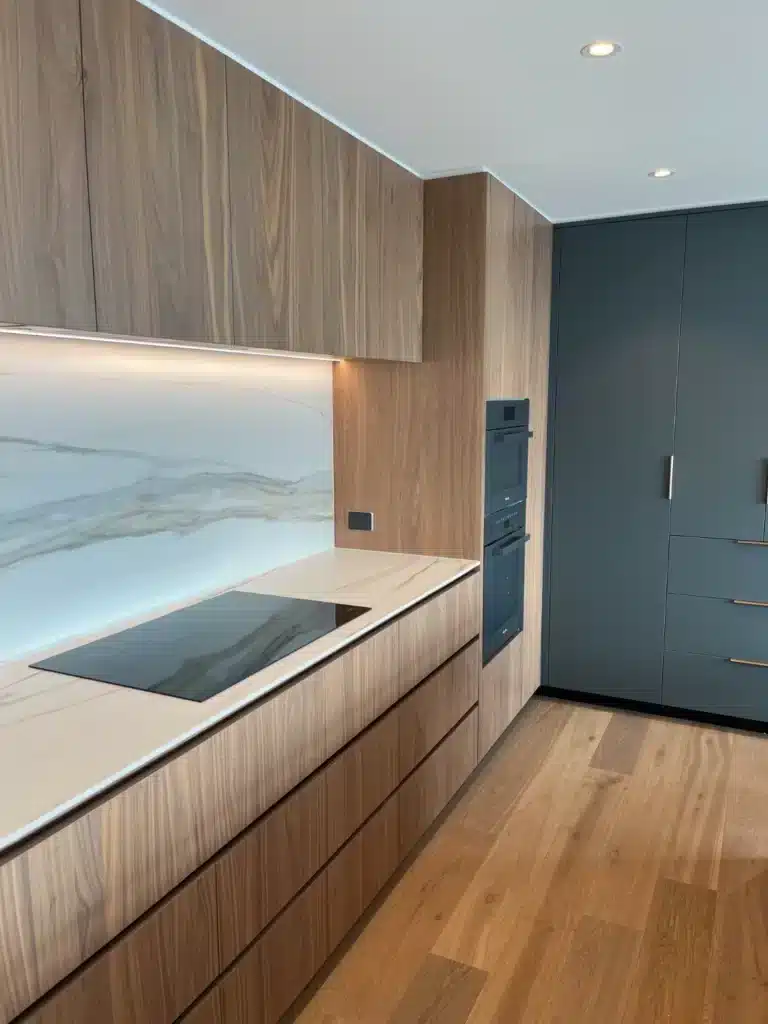
Dekton is one well known high-end brand that Box™ employs frequently but there’s also Florim stone, which is made of porcelain and can withstand very high temperatures. “Florim also comes in a slightly longer format which means that you may not need a join in your benchtop,” says Tim.
The collection of engineered-stone options is vast, and prices vary on the complexity of the manufacture. If you like something but think it may lay beyond your budget, Tim’s advice is to choose a couple of benchtop surfaces that you like and ask them to be priced up on the drawings as you could be pleasantly surprised. “The entry-level prices on some of the high-end stuff can be lower than you realise,” he remarks. Once you have a real-life comparison, you can make an informed decision as to what offers the best value in the long run.
Fringe options
By far the majority of benchtops that Box™ specifies are from the engineered-stone family – but your favourite is as individual and unique as you are so you might like to investigate other options. Timber brings warmth to an aesthetic but needs to be sealed and finished regularly to maintain its effectiveness and is prone to marking and staining. Poured concrete requires a lot more labour input and there are variables, such as the aggregate colour and the level of polish that you’ll need to decide on. Terrazzo – another form of manmade synthetic stone – that makes a definite statement.
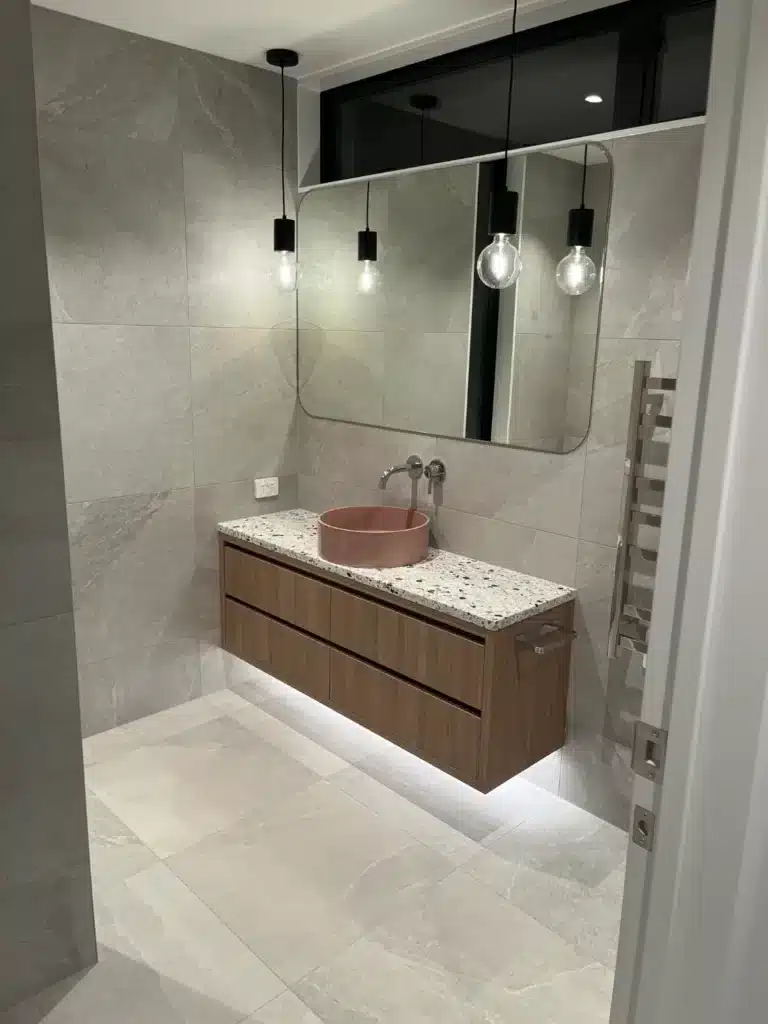
Counter intuitive
Most clients find the interiors process – where they sit down with their design lead to choose all the products that finish the design, including the kitchens and bathrooms – the fun part. But some find it stressful. That’s why Tim advises clients to bring in reference images, from magazines or brochures or Instagram posts, that everyone can refer to. When it comes to benchtops, it’s no different. “By the point you’re working at this level of detail, you’re bound to already have an image of your perfect kitchen in mind.” If a black kitchen happens to be on your wish-list, perhaps you’ll start with a black granite benchtop (it’s a smart-looking and economical option). However, don’t be surprised if you end up preferring the feel of an engineered stone such as Dekton in a dark colour. “Sometimes you can spend less and get a nicer material with better tactility,” says Tim. The trick is: if you like it, price it. It’s all a delicious journey of discovery that ends up in the kitchen. Can’t be bad.
